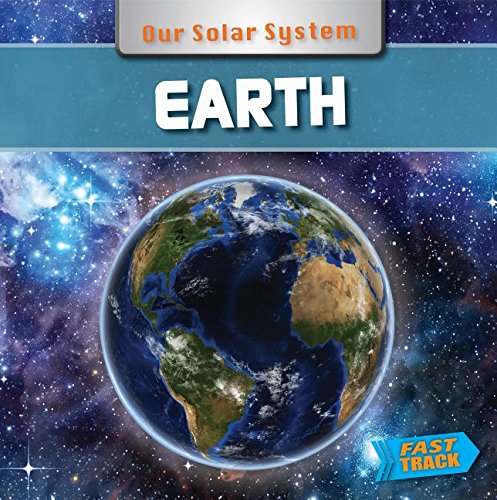-
Uranus, Neptune, and the Dwarf Planets
Rosalind Mist
Library Binding (QEB Publishing, Jan. 9, 2008)With informative diagrams and NASA photography, these fun books inform children about basic astronomy. Each planet, star, or space object is looked at in detail, as are developments in space technology, discoveries and astronomers. R
R
-
Space Exploration
Dana Meachen Rau
Paperback (Compass Point Books, Jan. 1, 2003)Describes how astronomers have been studying the solar system by using telescopes and through the use of space missions, both unmanned missions and manned missions. S
S
-
Hot Planets: Mercury and Venus
David Jefferis
Paperback (Crabtree Publishing Company, Sept. 1, 2008)The hottest planets of in our solar system, Mercury and Venus, are investigated in this fascinating title from the Exploring Our Solar System series. Come inside to find out why these planets are so hot, if astronauts could travel there, and if Mercury an T
T
-
Space Junk
Stephen John Kortenkamp
Library Binding (Capstone Press, Jan. 1, 2008)Describes the types of debris orbiting Earth and discusses the hazards space junk presents to spacecraft and astronauts. M
M
-
Uranus
Susan Ring
Paperback (Av2 by Weigl, Aug. 15, 2013)The Our Solar System series takes readers on an exciting journey through space to discover the unique characteristics of each planet. This compelling series explores each planets orbit, life forms, name origin, and physical features, along with a map showing its location in space, a timeline of observation, and comparisons to Earth and the other planets. From rocky planets to dwarf planets and ice giants to gas giants, each book in the series is filled with exciting facts that are sure to keep readers turning the pages. Our Solar System is a series of AV2 media enhanced books. A unique book code printed on page 2 unlocks multimedia content. These books come alive with video, audio, weblinks, slide shows, activities, hands-on experiments, and much more. V
V
-
Asteroids, Meteorites, and Comets
Linda T Elkins-Tanton
Hardcover (Facts on File, Aug. 1, 2010)Discusses the solar system bodies that are not one of the nine planets or their moons, including asteroids in the main asteroid belt as well as throughout the rest of the solar system, comets from both the Kuiper belt and from the much more distant Oort cloud, and the interplanetary dust left in their wakes. Also discussed are the discoveries of various asteroids, the nature of meteorites and impact craters, the orbits, sizes, and compositions of asteroids, along with the correlations scientists have made between meteorite classes and asteroids.
-
Sun
Robin Kerrod, David Atkinson
Hardcover (Belitha Press Ltd, April 14, 2000)None
-
Uranus: The Ice Planet
Greg Roza
Library Binding (Weekly Reader/Gareth Stevens Pub, Aug. 15, 2010)Introduces Uranus, the seventh planet from the Sun, describing its orbit, below-freezing temperatures, and physical composition. M
M
-
Uranus, Neptune, Pluto, and the Outer Solar System
Linda T Elkins-Tanton
Hardcover (Facts on File, Nov. 1, 2010)Unlike all the planets closer to the Sun, known since antiquity, the farthest reaches are the discoveries of the modern world. Uranus was discovered in 1781, Neptune in 1846, Pluto in 1930, the Kuiper belt group of objects in 1992, and though the Oort cloud has been theorized since 1950, its first member was found in 2004. The discovery of the outer planets made such an impression on the minds of mankind that they were immortalized in the names of the newly discovered elements: uranium, neptunium, and plutonium, an astonishingly deadly constituent of atomic bombs. Uranus, Neptune, Pluto, and the Outer Solar System, Revised Edition enters the farthest reaches of the solar system, including the distant gas planets Uranus and Neptune as well as the regions of asteroids and comets known as the Kuiper belt and the Oort cloud. Updated with new research and scientific findings, this full-color resource investigates theories about their formation and evolution.
-
Earth and Moon
Robin Kerrod, David Atkinson
Paperback (Chrysalis Books Group, Jan. 31, 2003)None
-
Mercury
Susan Ring
Library Binding (Av2 by Weigl, July 30, 2013)The Our Solar System series takes readers on an exciting journey through space to discover the unique characteristics of each planet. This compelling series explores each planets orbit, life forms, name origin, and physical features, along with a map showing its location in space, a timeline of observation, and comparisons to Earth and the other planets. From rocky planets to dwarf planets and ice giants to gas giants, each book in the series is filled with exciting facts that are sure to keep readers turning the pages. Our Solar System is a series of AV2 media enhanced books. A unique book code printed on page 2 unlocks multimedia content. These books come alive with video, audio, weblinks, slide shows, activities, hands-on experiments, and much more. R
R
